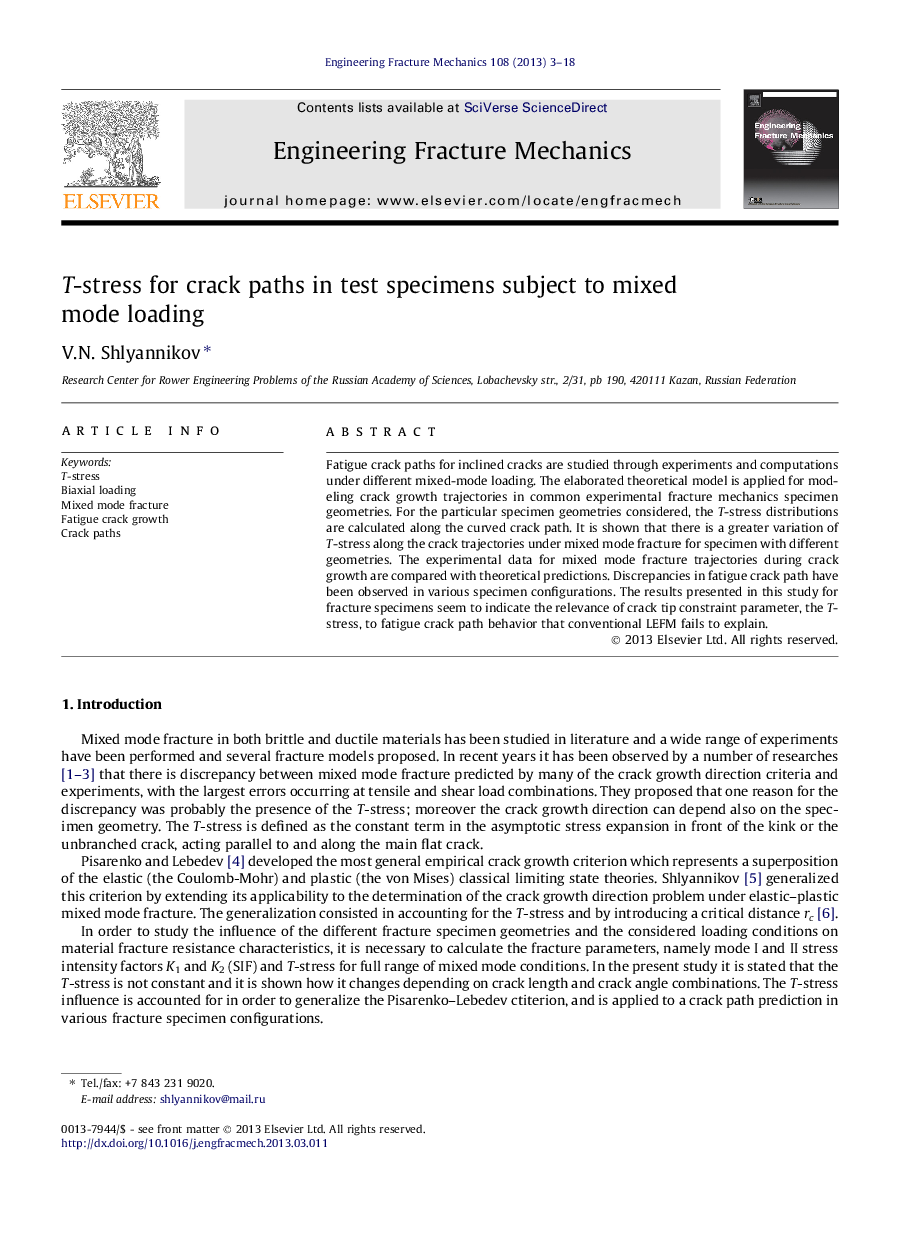| Article ID | Journal | Published Year | Pages | File Type |
|---|---|---|---|---|
| 770592 | Engineering Fracture Mechanics | 2013 | 16 Pages |
Highlight•The elaborated theoretical model is applied for modeling crack growth trajectories in experimental specimens. For the geometries considered, the T-stress distributions are calculated along the curved path. It is shown that there is a greater variation of T-stress along the crack trajectories under mixed mode fracture. The experimental data are compared with theoretical predictions.
Fatigue crack paths for inclined cracks are studied through experiments and computations under different mixed-mode loading. The elaborated theoretical model is applied for modeling crack growth trajectories in common experimental fracture mechanics specimen geometries. For the particular specimen geometries considered, the T-stress distributions are calculated along the curved crack path. It is shown that there is a greater variation of T-stress along the crack trajectories under mixed mode fracture for specimen with different geometries. The experimental data for mixed mode fracture trajectories during crack growth are compared with theoretical predictions. Discrepancies in fatigue crack path have been observed in various specimen configurations. The results presented in this study for fracture specimens seem to indicate the relevance of crack tip constraint parameter, the T-stress, to fatigue crack path behavior that conventional LEFM fails to explain.
